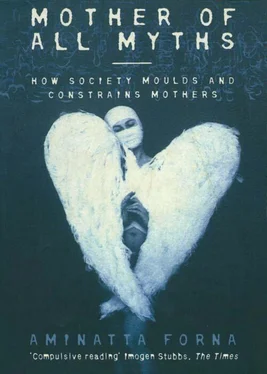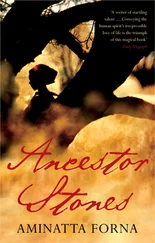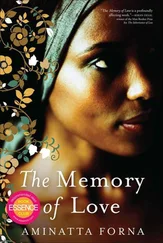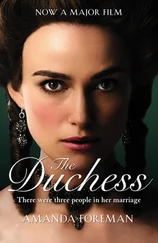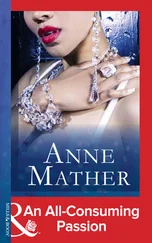The popular appeal of Bowlby’s theory of uninterrupted mothering lay in the fact that it seemed to explain something mothers already recognized – that children can be clingy. Bowlby took that premise several stages further and insisted that separating mother and child was actually wrong because it was damaging. Many psychologists now agree, however, that separation per se does not equal damage, even if the child cries when the mother leaves and even if the mother misses her child when she is apart from her. A child is not harmed by his mother working or by being left with other carers.
In his assessment of all the research since Bowlby, Rutter argued that attachment was neither exclusive nor irreversible, but rather a child could be attached to more people than just the mother and attachments could strengthen or weaken during the child’s life. As far as the mother was concerned, it was not the quantity of time but rather the intensity of interaction during the time she spent with her child: ‘mothers who play with their child and give him a great deal of attention have a more strongly attached child than those who interact with the child only when giving him routine care.’ 9 Rutter still talked in terms of the duties of mothers as opposed to fathers and so did little to shift the weight of responsibility, although he did lessen the load slightly. One unanticipated result was to start the 1980s vogue for ‘quality time’ with which modern working mothers tried to assuage their feelings of guilt towards their children.
Neither Bowlby nor his supporters paused to consider the individual characteristics or needs of mothers. It was as though they regarded women as coming from some kind of mould like Stepford Wives, willing and able to accept all the many requirements of their role. Perhaps they believed that ‘instinct’ would somehow subsume every other personality trait and mothers would express towards their children only a bland, ideal type of love. But it seems evident that an aggressive, competitive woman will make a very different kind of mother from a bookish, withdrawn one; an exuberant, cheerful woman will approach her role unlike an anxious woman; a woman whose interests consist solely of classical music and intellectual discourse will doubtless find less pleasure in the company of a three-year-old than someone who prefers board games and walking in the park. When it comes to ideas about motherhood, common sense can sometimes appear to go out of the window. Women have their share of all mankind’s imperfections, and yet to this day we expect to create perfect mothers out of imperfect humans.
Nancy Chodorow, a powerful psychoanalytical thinker, has taken the debate about attachment one stage further by saying that forcing mothers to spend all their time with their children, and to carry the entire emotional burden, guarantees the failure of the very relationship which Bowlby was trying to promote. Ann Dally, a psychiatrist, also points out that although mothers staying at home with their children remains a popular ideal, ‘there is no scientific evidence to justify it on psychological grounds and…if one wanted to look for evidence one might even come up with the suspicion that the era of unbroken and exclusive maternal care has produced the most neurotic, disjointed, alienated and drug-addicted generation ever known.’ 10
What’s more, the ideology of motherhood which Bowlby helped to create is almost entirely middle class in its aspirations, as well as being culturally specific. Although exclusive maternal care is often deemed to be natural – proponents of the idea usually point to baby monkeys clinging to their mothers’ backs in the animal world – it seems as though, among humans at least, this way of raising children is not actually standard. A study carried out in the late 1970s of 186 non-industrial cultures by two anthropologists. Weisner and Gallimore, found only five societies where the mother did not share the care of her children with other people. 11 Similar conclusions were noted in the seminal study Mothers of Six Cultures by a team of American anthropologists carried out over almost two decades from the 1950s to the 1970s. They observed that the American mother was unique among the cultures they studied in having sole responsibility for her children.
Many of the greatest minds of child development and mothering, including Michael Rutter, Nancy Chodorow, Ann Dally and the eminent British psychologist Barbara Tizard, have all surmised that shared parenting or shared mothering is just as good for children. Some even consider it to be preferable.
Dally provides a closing thought on the theory of attachment and how it has become a self-fulfilling prophecy:
Over the last forty years we…have been trying to condition babies to become attached to their mothers exclusively and, having done that, we…proceed to do research which reveals the undoubted distress caused when an infant who has been conditioned in this way is suddenly separated from his mother…This research is then used by academics and politicians to ‘prove’ that young children should be tied even more totally and exclusively to their mothers. 12
Psychology has succeeded in creating what it originally set out to describe.
Towards a child-centred philosophy of childcare
Since Bowlby published his theories, childcare has become increasingly focused on the child whose needs now take centre-stage. Throughout the 1950s, the man who defined ‘motherhood’ was the British psychoanalyst Donald Winnicott who elaborated and built on Bowlby’s themes of attachment and interdependence. Winnicott’s influence gave way in the 1960s to America’s Dr Benjamin Spock, who was regarded at the time as outrageously permissive in his ‘let the child decide’ approach to raising children. If greatness were measured in book sales and popular appeal alone, then Spock would stand head and shoulders above the rest of the gurus. Sales of his original volume Baby and Child Care reached 40 million and Spock continued to write until he died aged ninety-four in 1998.
Freudian ideas influenced both theorists. Spock and Winnicott emphasized the mother’s unique and (as far as Winnicott was concerned) irreplaceable role in the emotional growth of the child.
Donald Winnicott made his name at a time when mothers were still reeling from the extremes required by Truby King in the name of discipline and training. Mothers neither trusted their own judgement nor did they have any faith in the advice of their own mothers who still believed in the value of four-hour feeds. Indeed, the ‘gurus’ of the twentieth century have been almost solely responsible for breaking down the time-honoured passing of wisdom and knowledge about childcare from mothers to daughters. Winnicott won women over with his sympathetic approach which stressed maternal warmth and love instead of rules, rations and timetables.
Most people in the 1950s came to know of Winnicott through his immensely successful BBC radio lectures on childcare. For Winnicott, just like Bowlby, a woman could not be with her baby enough and anything less than total devotion to the role of mother was an absolute dereliction of a duty bestowed by nature. Perhaps his most famous contribution to twentieth-century ideas about motherhood was to say that there is no such thing as a baby, only a mother-baby unit.
Winnicott praised women’s efforts and their contribution repeatedly and self-consciously: ‘I am trying to draw attention to the immense contribution to the individual and to society that the ordinary good mother…makes at the beginning, and which she does simply through being devoted to her infant. ’ 13 And he set himself apart from other professionals who sought to tell mothers what to do and interfered with the natural process of mothering which, according to him, women knew best. Women warmed to him. At last it seemed, here was someone who thought about mothers and not just children.
Читать дальше
